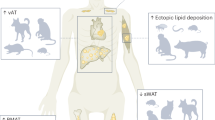Abstract
SLOW α2-globulin (SA2G) is a protein which can be demonstrated by vertical starch-gel elertrophoresis to be present in the blood serum of the rat in certain physiological, pathological and experimental situations: during pregnancy1–3 and lactation3, in the foetal1,3,4 and neonatal1–4 states; in rats bearing growing neoplasms1,2,5; in the presence of infections or inflammations6; after partial hepatectomy7,8, splenectomy or unilateral renalectomy9; and following the administration of carbon tetrachloride7, various bacterial lipopolysaccharides (endotoxins)10,11, complete or incomplete Freund's adjuvant11, turpentine12, or certain metallic salts13. It generally cannot be demonstrated by this technique, however, in healthy, non-pregnant adult rats1–4, nor after clean laparotomies7, partial limb amputations9, or heavy doses of ionizing radiation14. Consequently, we define the SA2G effect as being the appearance of demonstrable levels of SA2G in response to a competent stimulus. In view of the broad range of competent stimuli for the SA2G effect, a search for a common factor or controlling agent was undertaken. The present work indicates that the adrenal cortex is intimately involved in the appearance of the SA2G effect provoked by at least one of the competent stimuli and may be a controlling factor.
This is a preview of subscription content, access via your institution
Access options
Subscribe to this journal
Receive 51 print issues and online access
$199.00 per year
only $3.90 per issue
Buy this article
- Purchase on Springer Link
- Instant access to full article PDF
Prices may be subject to local taxes which are calculated during checkout
Similar content being viewed by others
References
Darcy, D. A., Brit. J. Cancer, 11, 137 (1957).
Beaton, G. H., Selby, A. E., Veen, M. J., and Wright, A. M., J. Biol. Chem., 236, 2005 (1963).
Heim, W. G., Nature, 193, 491 (1962).
Wise, R. W., Ballard, F. J., and Esekiel, E., Comp. Biochem. Physiol., 9, 23 (1963).
Boffa, G., Fine, J. M., and Zajdela, F., C.R. Acad. Sci., Paris, 225, 802 (1962).
Heim, W. G., and Lane, P. H., Nature, 203, 1077 (1964).
Heim, W. G., and Kerrigan, J. M., Nature, 199, 1100 (1963).
Boffa, G. A., Nadal, C., Zajdela, F., and Fine, J. M., Nature, 203, 1182 (1964).
Heim, W. G., Kerrigan, J. M., and Lane, P. H., Nature, 200, 688 (1963).
Lawford, D. J., and White, R. G., Nature, 201, 705 (1964).
Heim, W. G., and Lane, P. H., Nature, 203, 1077 (1964).
Weimer, H. E., and Benjamin, D. C., Fed. Proc., 23, 475 (1964).
Lawford, D. J., Biochem. Pharmacol., 7, 109 (1961).
Heim, W. G., Nature, 207, 1403 (1965).
Author information
Authors and Affiliations
Rights and permissions
About this article
Cite this article
HEIM, W., ELLENSON, S. Involvement of the Adrenal Cortex in the Appearance of Rat Slow Alpha2-Globulin. Nature 208, 1330–1331 (1965). https://doi.org/10.1038/2081330a0
Published:
Issue Date:
DOI: https://doi.org/10.1038/2081330a0
This article is cited by
-
Regulation of ?1-acid glycoprotein plasma concentration by sex steroids and adrenal-cortical hormones during experimental inflammation in the rat
Inflammation (1988)
-
Acute-phase response of plasma protein synthesis during experimental inflammation in neonatal rats
Inflammation (1985)
-
Relation between Rat Slow Alpha2-globulin and Alpha2-macroglobulin of Other Mammals
Nature (1968)
-
Adrenal Cortical Control of the Appearance of Rat Slow Alpha2-globulin
Nature (1967)
Comments
By submitting a comment you agree to abide by our Terms and Community Guidelines. If you find something abusive or that does not comply with our terms or guidelines please flag it as inappropriate.



